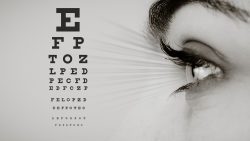 New research from Boston has shown success in the regrowth of human corneal tissue from adult stem cells to restore vision. Whether corneal tissue loss is due to damage from burns, chemical injury or eye diseases it is one of the leading reasons for blindness. This new groundbreaking process has the potential to restore vision in people that are blind.
New research from Boston has shown success in the regrowth of human corneal tissue from adult stem cells to restore vision. Whether corneal tissue loss is due to damage from burns, chemical injury or eye diseases it is one of the leading reasons for blindness. This new groundbreaking process has the potential to restore vision in people that are blind.
Inside the eye’s limbus reside stem cells that regenerate and maintain corneal tissue. When they are lost due to injury or disease blindness occurs. Transplants have been used in the past to regenerate corneal growth but the outcomes have not been consistent.
This is one of the first examples of tissue being constructed from adult stem cells derived from humans. The fundamental key to the success of this study is based on a molecule which is known as ABCB5. This is a biomarker for limbal stem cells that has previously been elusive. These particular cells are in the eye’s limbus, which is the cornea’s border and the white part of the eyes. They are important for recreating and maintaining corneal tissue. They have regenerative ability that researchers have striven for a while to harvest to grow human tissue in people who are blind from corneal disease or injury.
From over 10 years ago, the teams at the lab of the lead researcher discovered the essential ABCB5 molecule. It was seen in the skin and the intestine precursor cells. They discovered that the ABCB5 was an integral part of the eye’s limbus due to it preventing the cells from dying. To show another role of ABCB5’s in the eye, the team used mice divided into two groups. One group had a ABCB5 gene that was non-functional and the other group possessed a ABCB5 gene that was totally functioning. The mice who lacked the ABCB5 gene lost all of their limbal stem cell population, thus they could not repair any injuries to the corneas.
The team obtained corneal tissue from human deceased donors. They used antibodies that will bind to ABCB5 to find the limbal stem cells. After they were located, they removed them from the donor’s tissue and they were transplanted into the mice in which the limbal stem cells had been extracted. Their prediction was realized as fully corneal tissue derived from the deceased human donors was created in the mice which restored their vision. But the process only worked only when the crucial ABCB5 molecule was present in the limbal stem cells.
They will continue their study of ABCB5 to see if it could be used in a similar function for isolating skin stem cells for the use of transplantation. They do note that it has changed the game for adult stem cell research due to its identity as a molecular marker.
To view the original scientific study click below:
ABCB5 is a limbal stem cell gene required for corneal development and repair





